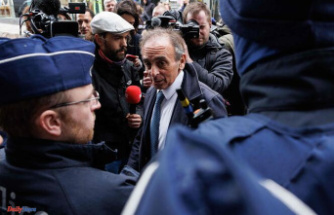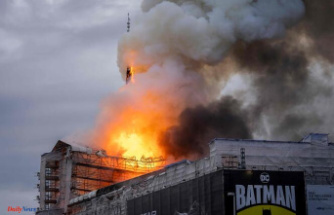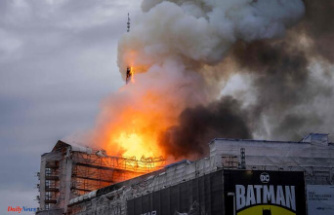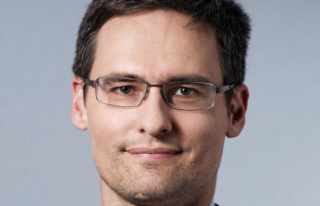The best-known contemporary archaeologist is undoubtedly Henry Walton "Indiana" Jones, Professor of Archeology at Marshall College in Connecticut. However, the inventors of this cinematic superstar, George Lucas and Steven Spielberg, were able to draw on famous role models when modeling "Indy", although it is not entirely clear whose character triumphed. One is the Asia traveler Langdon Warner, the other the South American explorer Hiram Bingham III (1875-1956). On July 24, 1911, he impressively demonstrated how he pursued archeology when he came across ruins from the Inca period in the Andes: Machu Picchu.
As far as looks went, Bingham undoubtedly had the edge. After all, portraying him – in stylish tropical clothing with a slouch hat or helmet – was one of the tasks of the photographers who accompanied his expeditions. The Hawaiian-born son of a missionary was driven above all by a burning desire to become famous. In his time, spectacular discoveries were a tried and tested means of doing this.
Bingham used his theological studies at Yale to delve into a historical field for which there was no basis at the time: there was no canon, no methods, no research circles for the history of Latin America. This offered the great advantage that the number of potential critics was very limited. As Bingham pieced together his discipline in the Yale and Harvard libraries, a verse by Briton Rudyard Kipling became his motto: “Something hidden. Go and find it. Go and search behind the mountains - something lost behind the mountains. Lost and waiting for you go!”
Marrying Alfreda Mitchell, heiress to the Tiffany fortune, gave him the wherewithal. Two extensive trips through South America followed. Finally, in 1911, a proper expedition was to help its leader achieve an international breakthrough. He found a benevolent sponsor in the oil millionaire Edward S. Harkness, who was more interested in geographical discoveries than historical ones.
That is why the first big find later turned out to be a non-starter. Human bones, which came to light not far from the ancient Inca metropolis of Cusco in Peru, under traces of a supposedly extinct species of bison, Bingham explained to be evidence of "Homo Americanus", an unknown human species that arrived in New Zealand long before the first settlers from Asia world had come. However, it later came out that the human bones had only ended up with numerous remains of cattle in a waste pit that had been dug by the Spaniards.
Before the truth came out, big media coverage persuaded Bingham to try his luck at archaeological discoveries. His destination was Willka Pampa (Vilcabamba), the last residence of the Inca rulers after the conquest of their heartland by Spanish conquistador Francisco Pizarro in 1531. Traveling through the rugged highlands, Bingham was killed by the Indian Melchor Arteage on July 24, 1911 on a ancient Inca trail to a site of ruins called Machu Picchu in Spanish accounts.
Bingham was not very enthusiastic, but moved on with his companions. In fact, he discovered ruins that later turned out to be from Willka Pampa. Another highlight of the expedition was to be the first ascent of a six-thousander in the Andes, but Bingham had to realize when he got to the top that he had climbed the wrong peak. Only on the way back did he think of the ruins of Machu Picchu, which were not very representative but were at least a discovery. He himself refrained from a new visit, but sent his people on the arduous ascent. They cleared the area of bushes and trees, then they went home.
A year later, Bingham leads another expedition to Peru. This time photographic documentation of Machu Picchu was recorded. After posing for the photographs for two weeks, he left the archaeological investigation to his people. This had little to do with systematic layer analysis, but served to collect impressive finds. After all, a necropolis was discovered. The contents of the graves made headlines: 85 percent of the skeletons were attributed to women, only 15 to men.
Another expedition in 1915 served to explore the high-altitude routes that the Incas had used to connect their cities and residences. At the same time, relations with the Peruvian authorities deteriorated. Bingham was accused - not without reason - of robbery and that he had taken his finds abroad. So he turned to publishing his finds, with the active support of the National Geographic Society.
A plethora of articles appeared, laying out highly speculative theories about the meaning of Machu Picchu. Its ruins became the "lost city of the Incas", the residence of their last ruler, the sanctuary of the 400 virgins of the sun who, according to Spanish chroniclers, were of religious and other service to the Incas. This was archeology the audience loved: great discoveries told of forgotten realms of treasure, power and dark secrets. The relationship with Indiana Jones cannot be denied.
But Bingham didn't stop at archaeology. After the United States entered World War I, he made a name for himself as a pilot who also used his wartime experiences for journalistic self-portrayal. This earned him the post of assistant governor, then governor, and finally a senator from Connecticut. He left his wife, with whom he had seven sons, and married his longtime lover.
It has long been known that several travelers before him had visited the ruins of Machu Picchu. But giving his stones a dazzling history was undoubtedly to Bingham's credit.
You can also find "World History" on Facebook. We are happy about a like.












